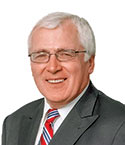Executive viewpoint
The last 10 years in the oil and gas industry have been one of the most exciting decades for some time. Through its newly developed technologies, the industry has been increasing production and helping the U.S. to lower its energy dependence. The next necessary phase in this journey is to lower production costs, especially in shale output.
However, our increasing energy supply over the last six years has been matched by constantly weak economies in the U.S. and the European Union, which resulted in a slowdown in the Chinese economy. This created a global “increasing supply, decreasing market” equation. Geopolitical calculations vis-à-vis cost of production in each country have also played critical roles.
The falling oil price has amplified several ongoing trends in U.S. technology acquisition and utilization. Over the last decade, the industry has suffered from the accelerating loss of employees with technical expertise. According to an IPAA report, 40% of the industry’s skilled professionals reached retirement age by 2010. Beside retirements, other contributing factors have played a role. Before 1989, professionals from the Eastern Hemisphere came to the U.S. and stayed, fearing retribution if they went back to their countries. Since 2000, most of them have come to the U.S., received high-level educations, and gone home. Undoubtedly, the disadvantageous U.S. immigration (especially the H-1B) system has played a significant role in this trend.
Constantly shrinking technology resources and the market’s cyclical nature have pushed the energy industry to replace “we hire everyone we can” human resource policies with a focused, expertise-based, third-party system that provides dynamic, just-in-time technology availability. Beside the industry’s growing resource problems, technology needs are also governed by market fluctuations. They demand new, mostly research-type technologies when oil price increases, and a focus on solutions and upgrades targeting production, maintenance, sustainability, efficiency, prevention and system integrity, when market trends point to the other direction.
The industry’s focus has turned toward engineering service companies (ESC) that have a large pool of technologists and laboratory assets under their control, and are capable of providing expert project management to get the job done. As far as “available capacity” is concerned, the last remaining untapped resource, of large, diversified and high-quality technology power resides in the Eastern Hemisphere (universities, research institutes, engineering and test laboratories). At the same time, project management has proven to represent 70% of total services. Energy companies want a turnkey, one-stop-shop response from the ESC; they have a problem and want an on-time, at-budget solution, coupled by expert project management, provided by the same vendor, who controls the resources. The maximum level of input they want to provide is a well-defined problem statement at the start, followed by milestone verifications (reports) during the project.
As a result, the role of ESCs with global human resources and diversified laboratory assets has been growing exponentially. However, these ESCs are required to assemble a team of world-class technologists, with laboratory assets, around a complex technology problem within a 72-hr time frame. Services must also include an expert project manager. This model also provides the highest level of confidentiality. Working with chosen technologists, based upon their specific knowledge, located across several time zones, significantly improves the prevention of unauthorized disclosure.
One challenge has been to educate the industry about the difference between “outsourcing,” and the model of “enabling by augmenting.” While outsourcing (most of the time) is based exclusively on financial issues, the new ESC model provides the missing knowledge, discipline, expertise and/or laboratory assets to the client’s team, enabling them to successfully complete the job. This missing link could be a two-day or a two-year-long project.
It is an understatement, that our seven-year journey has been exciting. TxIS’s vision of needed “engineering culture change” in the industry has proven to be correct. New discoveries and production require new, sophisticated technologies, represented by highly specialized technologists. They are unavailable, even to the largest service companies and operators.
To execute our plan, we needed a platform where industry players listened to us. Jay Collins, one of our board members, recommended that we join the National Ocean Industries Association (NOIA). It did not take long to realize the simple arithmetic of being a NOIA member. The size of your company and the nature of your business should not be part of the equation. Over the years, I’ve observed how NOIA is doing a remarkable job representing our industry’s interest in Washington D.C., while paying equal (if not even more) attention to its small-company members. If you run a small company, you need a platform where medium and large industry players get to know you, see who you are, and listen to you. NOIA has been instrumental on all counts.
I believe that we are looking at a decade, where sudden geopolitical changes will be the norm, resulting in oil price fluctuation at a relatively high frequency. This will further strain the energy industry’s (fluctuating) technology needs, requiring the complete adaptation of emerging technology availability models. There is a high probability that greater cooperation, shared project funding, and technology utilization within the industry, will be needed to lower costs while increasing efficiency and technology availability. ![]()



